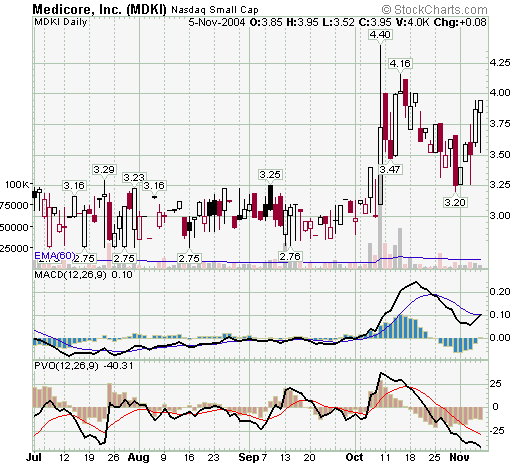Volume The Forgotten Oscillator
Post on: 25 Июнь, 2015 No Comment

by Martha Stokes, CMT
This oscillator can expose the amount of energy behind a price move.
M ost traders know the popular price oscillators: stochastic, the relative strength index ( Rsi ), Williams %R, price rate of change, and so forth. Price oscillators are second only to the moving average convergence/divergence ( Macd ) in popularity and use by retail traders. But few traders know about or use volume oscillators, a far more important category. While price oscillators are used mostly to reveal overbought and oversold price conditions with a high and low percentage range, volume oscillators can help identify the energy behind the move.
Volume oscillators
Volume oscillators can expose market energy of all kinds as well as reveal the shift of energy from up to down and vice versa. Being able to identify an increase in volume (which indicates increasing energy for the stock) or a shift in direction can help the short-term trader determine the duration and sustainability of the current price action. This can help screen out weaker stock picks and ascertain when to exit a trade.
In todays institutional activity–based market, the volume oscillator can reveal buying and selling patterns before price begins a major move. This is because many of the large institutions are careful not to disturb price as they buy incrementally.
Figure 1: ANTICIPATING REVERSALS AND RETRACEMENTS. From October to December, the volume oscillator pattern forms lower highs, indicating a weakening of upside energy. A spike exhaustion pattern during the correction in January forewarns of an exhaustion pattern to the downside trend. The February volume oscillator cycle fails to trough and the upside price action resumes.
On the daily chart of Kirklands, Inc. ( Kirk ), as price moves up during the October–December period, the volume oscillator pattern forms lower highs, indicating a weakening of upside energy (Figure 1). However, a spike exhaustion pattern during the correction in January forewarns of an exhaustion pattern to the downtrend as high-frequency traders sell short for one day and then move on. The February volume oscillator cycle fails to bottom and the upside price action resumes. By studying these patterns carefully, the retail trader can anticipate and prepare for reversals and retracements prior to price actually changing.
. Continued in the July issue of Technical Analysis of Stocks & Commodities
Excerpted from an article originally published in the July 2010 issue of
Technical Analysis of Stocks & Commodities magazine. All rights reserved.














